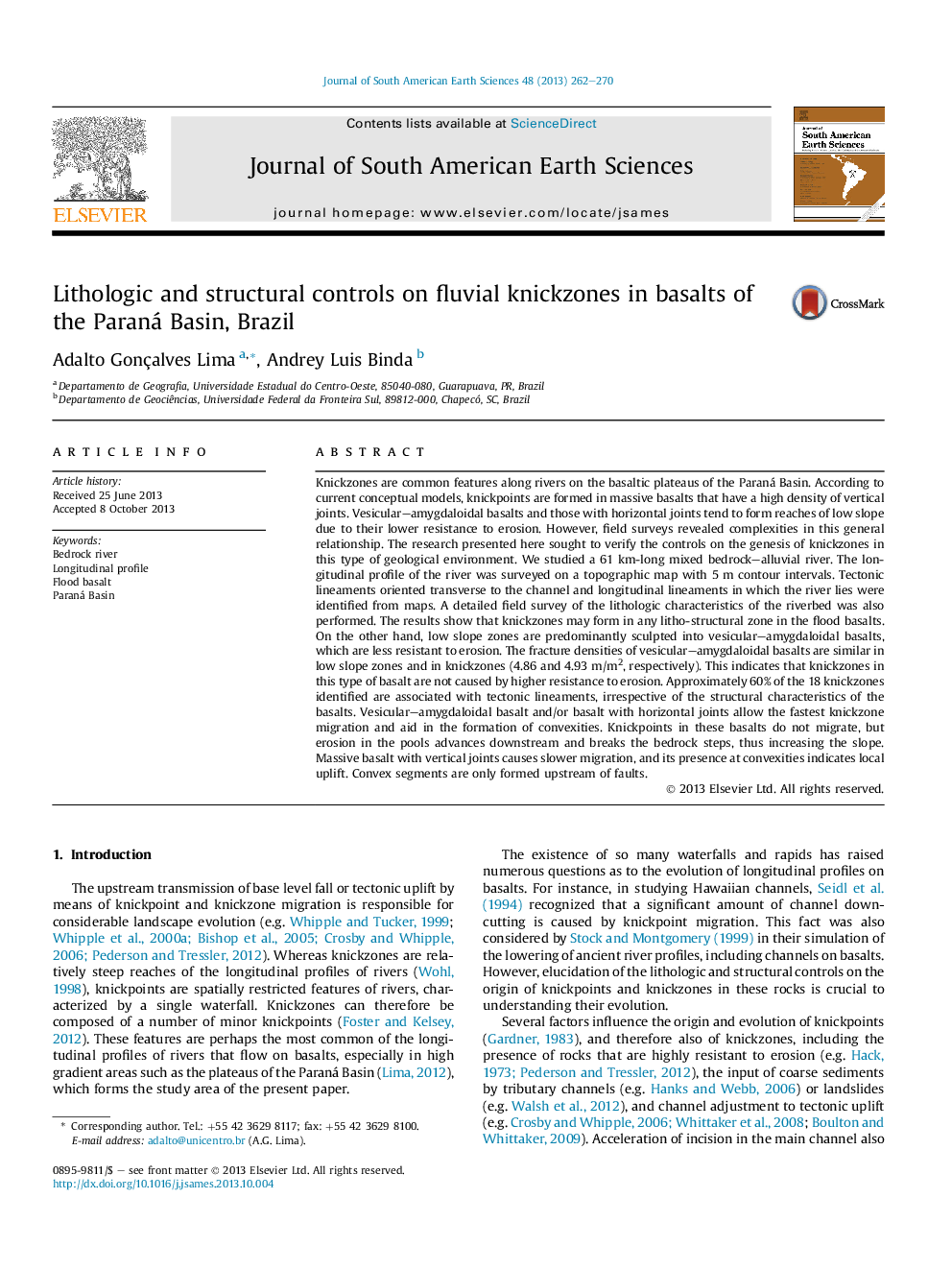| کد مقاله | کد نشریه | سال انتشار | مقاله انگلیسی | نسخه تمام متن |
|---|---|---|---|---|
| 4682385 | 1635161 | 2013 | 9 صفحه PDF | دانلود رایگان |
• Fluvial knickzones in basalts were surveyed in the field and on maps.
• Knickzones are present in all litho-structural zones of the flood basalts.
• Low slope zones are predominantly associated with vesicular–amygdaloidal basalts.
• Tectonic lineaments are the first-order control on the formation of knickzones.
Knickzones are common features along rivers on the basaltic plateaus of the Paraná Basin. According to current conceptual models, knickpoints are formed in massive basalts that have a high density of vertical joints. Vesicular–amygdaloidal basalts and those with horizontal joints tend to form reaches of low slope due to their lower resistance to erosion. However, field surveys revealed complexities in this general relationship. The research presented here sought to verify the controls on the genesis of knickzones in this type of geological environment. We studied a 61 km-long mixed bedrock–alluvial river. The longitudinal profile of the river was surveyed on a topographic map with 5 m contour intervals. Tectonic lineaments oriented transverse to the channel and longitudinal lineaments in which the river lies were identified from maps. A detailed field survey of the lithologic characteristics of the riverbed was also performed. The results show that knickzones may form in any litho-structural zone in the flood basalts. On the other hand, low slope zones are predominantly sculpted into vesicular–amygdaloidal basalts, which are less resistant to erosion. The fracture densities of vesicular–amygdaloidal basalts are similar in low slope zones and in knickzones (4.86 and 4.93 m/m2, respectively). This indicates that knickzones in this type of basalt are not caused by higher resistance to erosion. Approximately 60% of the 18 knickzones identified are associated with tectonic lineaments, irrespective of the structural characteristics of the basalts. Vesicular–amygdaloidal basalt and/or basalt with horizontal joints allow the fastest knickzone migration and aid in the formation of convexities. Knickpoints in these basalts do not migrate, but erosion in the pools advances downstream and breaks the bedrock steps, thus increasing the slope. Massive basalt with vertical joints causes slower migration, and its presence at convexities indicates local uplift. Convex segments are only formed upstream of faults.
Journal: Journal of South American Earth Sciences - Volume 48, December 2013, Pages 262–270
